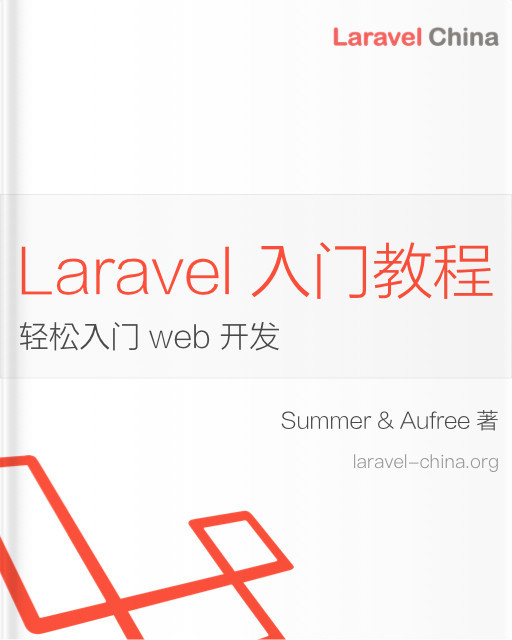HTTP 测试
HTTP 测试
Laravel 提供了非常流畅的 API,用于对你的应用发起 HTTP 请求并检查响应结果。例如,以下是一个基础功能测试的示例:
<?php
test('the application returns a successful response', function () {
$response = $this->get('/');
$response->assertStatus(200);
});<?php
namespace Tests\Feature;
use Tests\TestCase;
class ExampleTest extends TestCase
{
/**
* 一个基础测试示例。
*/
public function test_the_application_returns_a_successful_response(): void
{
$response = $this->get('/');
$response->assertStatus(200);
}
}这里的 get 方法是向应用程序发起一个 GET 请求,而 assertStatus 方法断言返回的响应状态码应为 200。
除了这个简单的断言外,Laravel 还提供了多种用于检查响应头、响应内容、JSON 结构等的断言方法。
发起请求
在测试中你可以使用 get、post、put、patch 或 delete 方法向应用发起请求。
这些方法并不会真正通过网络发送 HTTP 请求,而是 在内部模拟整个请求流程,因此测试非常快速且不依赖外部服务。
Laravel 中的测试请求方法并不会返回 Illuminate\Http\Response 实例,而是返回 Illuminate\Testing\TestResponse 实例。这个类提供了多种有用的断言方法,便于你检查应用程序的响应内容:
<?php
test('basic request', function () {
$response = $this->get('/');
$response->assertStatus(200);
});<?php
namespace Tests\Feature;
use Tests\TestCase;
class ExampleTest extends TestCase
{
/**
* 一个基础的测试示例。
*/
public function test_a_basic_request(): void
{
$response = $this->get('/');
$response->assertStatus(200);
}
}通常来说,每个测试方法中应该只对应用发起一次请求。如果在一个测试方法中发起多个请求,可能会导致意料之外的行为。
为了测试方便,Laravel 在运行测试时会自动禁用 CSRF 中间件。
自定义请求头
你可以使用 withHeaders 方法,在请求发送前自定义请求头。这允许你为请求添加任何你想要的自定义 Header:
<?php
test('interacting with headers', function () {
$response = $this->withHeaders([
'X-Header' => 'Value',
])->post('/user', ['name' => 'Sally']);
$response->assertStatus(201);
});<?php
namespace Tests\Feature;
use Tests\TestCase;
class ExampleTest extends TestCase
{
/**
* 一个带有请求头的功能测试。
*/
public function test_interacting_with_headers(): void
{
$response = $this->withHeaders([
'X-Header' => 'Value',
])->post('/user', ['name' => 'Sally']);
$response->assertStatus(201);
}
}Cookies
你可以使用 withCookie 或 withCookies 方法,在发起请求前设置 Cookie。
withCookie(name, value)方法接收 Cookie 名称和值两个参数;withCookies([key => value])方法则接收一个键值对数组:
<?php
test('interacting with cookies', function () {
$response = $this->withCookie('color', 'blue')->get('/');
$response = $this->withCookies([
'color' => 'blue',
'name' => 'Taylor',
])->get('/');
//
});<?php
namespace Tests\Feature;
use Tests\TestCase;
class ExampleTest extends TestCase
{
public function test_interacting_with_cookies(): void
{
$response = $this->withCookie('color', 'blue')->get('/');
$response = $this->withCookies([
'color' => 'blue',
'name' => 'Taylor',
])->get('/');
//
}
}会话 / 身份验证
Laravel 提供了多个辅助方法,用于在 HTTP 测试期间与会话进行交互。首先,你可以使用 withSession 方法设置会话数据。这个方法在你发起请求之前,预先将数据写入会话非常有用:
<?php
test('interacting with the session', function () {
$response = $this->withSession(['banned' => false])->get('/');
//
});<?php
namespace Tests\Feature;
use Tests\TestCase;
class ExampleTest extends TestCase
{
public function test_interacting_with_the_session(): void
{
$response = $this->withSession(['banned' => false])->get('/');
//
}
}Laravel 的会话通常用于维护当前已认证用户的状态。因此,actingAs 辅助方法提供了一个简单的方式,用于将指定用户设置为当前登录用户。例如,我们可以使用 模型工厂 来生成并认证一个用户:
<?php
use App\Models\User;
test('an action that requires authentication', function () {
$user = User::factory()->create();
$response = $this->actingAs($user)
->withSession(['banned' => false])
->get('/');
//
});<?php
namespace Tests\Feature;
use App\Models\User;
use Tests\TestCase;
class ExampleTest extends TestCase
{
public function test_an_action_that_requires_authentication(): void
{
$user = User::factory()->create();
$response = $this->actingAs($user)
->withSession(['banned' => false])
->get('/');
//
}
}你还可以通过 actingAs 方法的第二个参数指定使用的 guard 名称。指定的 guard 会在当前测试生命周期内成为默认 guard:
$this->actingAs($user, 'web')调试响应
在向应用程序发起测试请求之后,可以使用 dump、dumpHeaders 和 dumpSession 方法来查看和调试响应的内容:
<?php
test('basic test', function () {
$response = $this->get('/');
$response->dumpHeaders();
$response->dumpSession();
$response->dump();
});<?php
namespace Tests\Feature;
use Tests\TestCase;
class ExampleTest extends TestCase
{
/**
* 一个基本的测试示例。
*/
public function test_basic_test(): void
{
$response = $this->get('/');
$response->dumpHeaders();
$response->dumpSession();
$response->dump();
}
}你也可以使用 dd 系列方法来输出响应信息并立即终止测试执行:
dd():输出整个响应ddHeaders():输出响应头ddBody():输出原始响应体ddJson():格式化输出 JSON 响应体ddSession():输出当前会话内容
<?php
test('basic test', function () {
$response = $this->get('/');
$response->dd();
$response->ddHeaders();
$response->ddBody();
$response->ddJson();
$response->ddSession();
});<?php
namespace Tests\Feature;
use Tests\TestCase;
class ExampleTest extends TestCase
{
/**
* 一个基本的测试示例。
*/
public function test_basic_test(): void
{
$response = $this->get('/');
$response->dd();
$response->ddHeaders();
$response->ddBody();
$response->ddJson();
$response->ddSession();
}
}异常处理
有时,你可能需要测试你的应用程序是否抛出了某个特定的异常。你可以通过 Laravel 提供的 Exceptions facade 来“伪造”异常处理器,从而捕获异常并断言它的内容。
一旦异常处理器被伪造,你就可以使用 assertReported 或 assertNotReported 方法断言某个异常是否已被抛出并报告:
<?php
use App\Exceptions\InvalidOrderException;
use Illuminate\Support\Facades\Exceptions;
test('exception is thrown', function () {
Exceptions::fake();
$response = $this->get('/order/1');
// 断言已抛出指定类型的异常
Exceptions::assertReported(InvalidOrderException::class);
// 使用闭包断言异常详情
Exceptions::assertReported(function (InvalidOrderException $e) {
return $e->getMessage() === 'The order was invalid.';
});
});<?php
namespace Tests\Feature;
use App\Exceptions\InvalidOrderException;
use Illuminate\Support\Facades\Exceptions;
use Tests\TestCase;
class ExampleTest extends TestCase
{
/**
* 一个基本的测试示例。
*/
public function test_exception_is_thrown(): void
{
Exceptions::fake();
$response = $this->get('/');
// 断言已抛出指定类型的异常
Exceptions::assertReported(InvalidOrderException::class);
// 使用闭包断言异常内容
Exceptions::assertReported(function (InvalidOrderException $e) {
return $e->getMessage() === 'The order was invalid.';
});
}
}assertNotReported 和 assertNothingReported 方法可用于断言请求期间未抛出给定异常或没有抛出任何异常:
Exceptions::assertNotReported(InvalidOrderException::class);
Exceptions::assertNothingReported();你可以通过在发出请求之前调用 withoutExceptionHandling 方法来完全禁用给定请求的异常处理:
$response = $this->withoutExceptionHandling()->get('/');此外,如果你希望确保你的应用程序未使用 PHP 语言或其使用的库中已弃用的功能,你可以在发出请求之前调用 withoutDeprecationHandling 方法。禁用弃用处理时,弃用警告将被转换为异常,从而导致你的测试失败:
$response = $this->withoutDeprecationHandling()->get('/');assertThrows 方法可用于断言给定闭包中的代码抛出了指定类型的异常:
$this->assertThrows(
fn () => (new ProcessOrder)->execute(),
OrderInvalid::class
);如果你希望检查并对所抛出的异常进行断言,可以将闭包作为 assertThrows 方法的第二个参数传入:
$this->assertThrows(
fn () => (new ProcessOrder)->execute(),
fn (OrderInvalid $e) => $e->orderId() === 123;
);assertDoesntThrow 方法可用于断言给定闭包中的代码未抛出任何异常:
$this->assertDoesntThrow(fn () => (new ProcessOrder)->execute());测试 JSON API
Laravel 还提供了一些辅助方法用于测试 JSON API 及其响应。例如,json、getJson、postJson、putJson、patchJson、deleteJson 和 optionsJson 方法可用于使用不同的 HTTP 动词发出 JSON 请求。你还可以轻松地向这些方法传递数据和头信息。让我们从编写一个测试开始,该测试向 /api/user 发出 POST 请求,并断言返回了预期的 JSON 数据:
<?php
test('making an api request', function () {
$response = $this->postJson('/api/user', ['name' => 'Sally']);
$response
->assertStatus(201)
->assertJson([
'created' => true,
]);
});<?php
namespace Tests\Feature;
use Tests\TestCase;
class ExampleTest extends TestCase
{
/**
* 一个基本的功能测试示例。
*/
public function test_making_an_api_request(): void
{
$response = $this->postJson('/api/user', ['name' => 'Sally']);
$response
->assertStatus(201)
->assertJson([
'created' => true,
]);
}
}此外,JSON 响应数据可以像数组变量一样在响应中访问,这让你可以方便地检查 JSON 响应中返回的各个值:
expect($response['created'])->toBeTrue();$this->assertTrue($response['created']);
assertJson方法会将响应转换为数组,以验证所提供的数组是否存在于应用返回的 JSON 响应中。因此,即使 JSON 响应中还有其他属性,只要提供的片段存在,测试也会通过。
断言精确的 JSON 匹配
如前所述,assertJson 方法可用于断言 JSON 响应中包含某个 JSON 片段。如果你希望验证指定数组 与应用返回的 JSON 完全一致,则应使用 assertExactJson 方法:
<?php
test('asserting an exact json match', function () {
$response = $this->postJson('/user', ['name' => 'Sally']);
$response
->assertStatus(201)
->assertExactJson([
'created' => true,
]);
});<?php
namespace Tests\Feature;
use Tests\TestCase;
class ExampleTest extends TestCase
{
/**
* 一个基础功能测试示例。
*/
public function test_asserting_an_exact_json_match(): void
{
$response = $this->postJson('/user', ['name' => 'Sally']);
$response
->assertStatus(201)
->assertExactJson([
'created' => true,
]);
}
}断言 JSON 路径的值
如果你希望验证 JSON 响应中指定路径上的数据值,可以使用 assertJsonPath 方法:
<?php
test('asserting a json path value', function () {
$response = $this->postJson('/user', ['name' => 'Sally']);
$response
->assertStatus(201)
->assertJsonPath('team.owner.name', 'Darian');
});<?php
namespace Tests\Feature;
use Tests\TestCase;
class ExampleTest extends TestCase
{
/**
* 一个基础功能测试示例。
*/
public function test_asserting_a_json_paths_value(): void
{
$response = $this->postJson('/user', ['name' => 'Sally']);
$response
->assertStatus(201)
->assertJsonPath('team.owner.name', 'Darian');
}
}assertJsonPath 方法也接受闭包,该闭包可用于动态判断断言是否应通过:
$response->assertJsonPath('team.owner.name', fn (string $name) => strlen($name) >= 3);Fluent JSON 测试
Laravel 也提供了一种优雅的方式来以链式方式测试应用程序的 JSON 响应。要开始使用,请将一个闭包传递给 assertJson 方法。该闭包将被传入一个 Illuminate\Testing\Fluent\AssertableJson 的实例,可用于对返回的 JSON 进行断言。
where 方法可用于对 JSON 的特定属性进行断言,而 missing 方法可用于断言某个属性在 JSON 中缺失:
use Illuminate\Testing\Fluent\AssertableJson;
test('fluent json', function () {
$response = $this->getJson('/users/1');
$response
->assertJson(fn (AssertableJson $json) =>
$json->where('id', 1)
->where('name', 'Victoria Faith')
->where('email', fn (string $email) => str($email)->is('victoria@gmail.com'))
->whereNot('status', 'pending')
->missing('password')
->etc()
);
});use Illuminate\Testing\Fluent\AssertableJson;
/**
* A basic functional test example.
*/
public function test_fluent_json(): void
{
$response = $this->getJson('/users/1');
$response
->assertJson(fn (AssertableJson $json) =>
$json->where('id', 1)
->where('name', 'Victoria Faith')
->where('email', fn (string $email) => str($email)->is('victoria@gmail.com'))
->whereNot('status', 'pending')
->missing('password')
->etc()
);
}理解 etc 方法
在上面的示例中,你可能注意到我们在断言链的结尾调用了 etc 方法。此方法告知 Laravel,在该 JSON 对象中可能还存在其他属性。
如果不使用 etc 方法,那么如果该 JSON 对象中存在你未进行断言的其他属性,测试将会失败。
该行为背后的意图是为了防止你在 JSON 响应中无意间暴露敏感信息,方法是强制你要么显式地对属性进行断言,要么通过 etc 方法显式允许额外的属性。
然而,你需要注意,不在断言链中包含 etc 方法并不能确保在嵌套于 JSON 对象内部的数组中不会添加额外属性。etc 方法仅确保在调用该方法的嵌套层级中不存在额外属性。
断言属性的存在 / 缺失
要断言某个属性是否存在或缺失,你可以使用 has 和 missing 方法:
$response->assertJson(fn (AssertableJson $json) =>
$json->has('data')
->missing('message')
);此外,hasAll 和 missingAll 方法允许你同时断言多个属性的存在或缺失
$response->assertJson(fn (AssertableJson $json) =>
$json->hasAll(['status', 'data'])
->missingAll(['message', 'code'])
);你可以使用 hasAny 方法来判断指定的一组属性中是否至少有一个存在:
$response->assertJson(fn (AssertableJson $json) =>
$json->has('status')
->hasAny('data', 'message', 'code')
);针对 JSON 集合进行断言
通常,你的路由会返回包含多个项目的 JSON 响应,比如多个用户:
Route::get('/users', function () {
return User::all();
});在这种情况下,我们可以使用 Fluent JSON 对象的 has 方法,对响应中包含的用户进行断言。例如,我们可以断言该 JSON 响应包含三个用户。接着,我们使用 first 方法对集合中的第一个用户进行断言。first 方法接受一个闭包,该闭包会接收另一个可用于断言的 JSON 字符串对象,用于对 JSON 集合中的第一个对象进行断言:
$response
->assertJson(fn (AssertableJson $json) =>
$json->has(3)
->first(fn (AssertableJson $json) =>
$json->where('id', 1)
->where('name', 'Victoria Faith')
->where('email', fn (string $email) => str($email)->is('victoria@gmail.com'))
->missing('password')
->etc()
)
);为 JSON 集合设置作用域断言
有时,你的应用路由会返回包含命名键的 JSON 集合,例如:
Route::get('/users', function () {
return [
'meta' => [...],
'users' => User::all(),
];
})在测试这些路由时,你可以使用 has 方法断言集合中的项数。此外,还可以通过 has 方法为一系列断言设定作用域:
$response
->assertJson(fn (AssertableJson $json) =>
$json->has('meta')
->has('users', 3)
->has('users.0', fn (AssertableJson $json) =>
$json->where('id', 1)
->where('name', 'Victoria Faith')
->where('email', fn (string $email) => str($email)->is('victoria@gmail.com'))
->missing('password')
->etc()
)
);不过,与其使用两个 has 方法来分别断言 users 集合的项数和第一项的属性,不如在一次 has 调用中传入第三个参数(闭包),此时该闭包将自动作用于集合中的第一项:
$response
->assertJson(fn (AssertableJson $json) =>
$json->has('meta')
->has('users', 3, fn (AssertableJson $json) =>
$json->where('id', 1)
->where('name', 'Victoria Faith')
->where('email', fn (string $email) => str($email)->is('victoria@gmail.com'))
->missing('password')
->etc()
)
);断言 JSON 属性类型
你可能只想断言 JSON 响应中属性的类型是否符合预期。Illuminate\Testing\Fluent\AssertableJson 类提供了 whereType 和 whereAllType 方法来实现这一点:
$response->assertJson(fn (AssertableJson $json) =>
$json->whereType('id', 'integer')
->whereAllType([
'users.0.name' => 'string',
'meta' => 'array'
])
);你可以使用 | 字符指定多个类型,或者将类型数组作为第二个参数传递给 whereType 方法。只要响应值匹配其中任意一个类型,断言就会通过:
$response->assertJson(fn (AssertableJson $json) =>
$json->whereType('name', 'string|null')
->whereType('id', ['string', 'integer'])
);whereType 和 whereAllType 方法支持以下类型:string、integer、double、boolean、array 和 null。
测试文件上传
Illuminate\Http\UploadedFile 类提供了一个 fake 方法,可以用于生成测试用的假文件或图片。该方法通常与 Storage facade 的 fake 方法搭配使用,从而极大简化了文件上传功能的测试流程。例如,下面的代码就可以轻松测试头像上传表单:
<?php
use Illuminate\Http\UploadedFile;
use Illuminate\Support\Facades\Storage;
test('avatars can be uploaded', function () {
Storage::fake('avatars');
$file = UploadedFile::fake()->image('avatar.jpg');
$response = $this->post('/avatar', [
'avatar' => $file,
]);
Storage::disk('avatars')->assertExists($file->hashName());
});<?php
namespace Tests\Feature;
use Illuminate\Http\UploadedFile;
use Illuminate\Support\Facades\Storage;
use Tests\TestCase;
class ExampleTest extends TestCase
{
public function test_avatars_can_be_uploaded(): void
{
Storage::fake('avatars');
$file = UploadedFile::fake()->image('avatar.jpg');
$response = $this->post('/avatar', [
'avatar' => $file,
]);
Storage::disk('avatars')->assertExists($file->hashName());
}
}如果你想断言某个文件不存在,可以使用 Storage facade 提供的 assertMissing 方法:
Storage::fake('avatars');
// ...
Storage::disk('avatars')->assertMissing('missing.jpg');虚拟文件的自定义
使用 UploadedFile 类提供的 fake 方法创建文件时,你可以指定图像的宽度、高度以及文件大小(以 KB 为单位),以便更好地测试应用程序的验证规则:
UploadedFile::fake()->image('avatar.jpg', $width, $height)->size(100);除了创建图片之外,你还可以使用 create 方法创建任意类型的文件:
UploadedFile::fake()->create('document.pdf', $sizeInKilobytes);如有需要,你还可以传递 $mimeType 参数来显式指定该文件返回的 MIME 类型:
UploadedFile::fake()->create(
'document.pdf', $sizeInKilobytes, 'application/pdf'
);测试视图
Laravel 还允许你在不发起模拟 HTTP 请求的前提下渲染视图。在测试中,你可以通过调用 view 方法来完成这一操作。该方法接受视图名称及一个可选的数据数组,并返回一个 Illuminate\Testing\TestView 实例,该实例提供了一些便捷的方法来对视图内容进行断言:
<?php
test('a welcome view can be rendered', function () {
$view = $this->view('welcome', ['name' => 'Taylor']);
$view->assertSee('Taylor');
});<?php
namespace Tests\Feature;
use Tests\TestCase;
class ExampleTest extends TestCase
{
public function test_a_welcome_view_can_be_rendered(): void
{
$view = $this->view('welcome', ['name' => 'Taylor']);
$view->assertSee('Taylor');
}
}TestView 类提供了以下断言方法:
assertSeeassertSeeInOrderassertSeeTextassertSeeTextInOrderassertDontSeeassertDontSeeText
如有需要,你还可以通过将 TestView 实例强制转换为字符串来获取原始渲染后的视图内容:
$contents = (string) $this->view('welcome');共享错误
某些视图可能依赖于 Laravel 提供的全局错误包。你可以使用 withViewErrors 方法为错误包注入错误信息:
$view = $this->withViewErrors([
'name' => ['Please provide a valid name.']
])->view('form');
$view->assertSee('Please provide a valid name.');渲染 Blade 和组件
如有需要,你可以使用 blade 方法来解析并渲染一段原始的 Blade 模板字符串。与 view 方法类似,blade 方法返回 Illuminate\Testing\TestView 实例:
$view = $this->blade(
'<x-component :name="$name" />',
['name' => 'Taylor']
);
$view->assertSee('Taylor');你也可以使用 component 方法来渲染一个 Blade 组件。该方法返回一个 Illuminate\Testing\TestComponent 实例:
$view = $this->component(Profile::class, ['name' => 'Taylor']);
$view->assertSee('Taylor');可用的断言方法
响应断言
Laravel 的 Illuminate\Testing\TestResponse 类提供了丰富的自定义断言方法,可用于测试应用程序的 HTTP 响应。这些断言方法可以通过 json、get、post、put 和 delete 测试方法返回的响应对象进行调用。
assertAccepted
assertBadRequest
assertClientError
assertConflict
assertCookie
assertCookieExpired
assertCookieNotExpired
assertCookieMissing
assertCreated
assertDontSee
assertDontSeeText
assertDownload
assertExactJson
assertExactJsonStructure
assertForbidden
assertFound
assertGone
assertHeader
assertHeaderMissing
assertInternalServerError
assertJson
assertJsonCount
assertJsonFragment
assertJsonIsArray
assertJsonIsObject
assertJsonMissing
assertJsonMissingExact
assertJsonMissingValidationErrors
assertJsonPath
assertJsonMissingPath
assertJsonStructure
assertJsonValidationErrors
assertJsonValidationErrorFor
assertLocation
assertMethodNotAllowed
assertMovedPermanently
assertContent
assertNoContent
assertStreamed
assertStreamedContent
assertNotFound
assertOk
assertPaymentRequired
assertPlainCookie
assertRedirect
assertRedirectBack
assertRedirectContains
assertRedirectToRoute
assertRedirectToSignedRoute
assertRequestTimeout
assertSee
assertSeeInOrder
assertSeeText
assertSeeTextInOrder
assertServerError
assertServiceUnavailable
assertSessionHas
assertSessionHasInput
assertSessionHasAll
assertSessionHasErrors
assertSessionHasErrorsIn
assertSessionHasNoErrors
assertSessionDoesntHaveErrors
assertSessionMissing
assertStatus
assertSuccessful
assertTooManyRequests
assertUnauthorized
assertUnprocessable
assertUnsupportedMediaType
assertValid
assertInvalid
assertViewHas
assertViewHasAll
assertViewIs
assertViewMissing
assertAccepted
断言响应的 HTTP 状态码为 202 Accepted(已接受):
$response->assertAccepted();assertBadRequest
断言响应的 HTTP 状态码为 400 Bad Request(错误请求):
$response->assertBadRequest();assertClientError
断言响应的 HTTP 状态码属于客户端错误(范围:400–499):
$response->assertClientError();assertConflict
断言响应的 HTTP 状态码为 409 Conflict(冲突)
$response->assertConflict();assertCookie
断言响应中包含指定名称的 Cookie,并可选验证其值:
$response->assertCookie($cookieName, $value = null);assertCookieExpired
断言响应中包含指定名称的 Cookie,且该 Cookie 已过期:
$response->assertCookieExpired($cookieName);assertCookieNotExpired
断言响应中包含指定名称的 Cookie,且该 Cookie 尚未过期:
$response->assertCookieNotExpired($cookieName);assertCookieMissing
断言响应中不包含指定名称的 Cookie:
$response->assertCookieMissing($cookieName);assertCreated
断言响应的 HTTP 状态码为 201 Created(已创建):
$response->assertCreated();assertDontSee
断言响应内容中不包含指定字符串。默认情况下该字符串会被自动转义,除非你传入第二个参数为 false:
$response->assertDontSee($value, $escape = true);assertDontSeeText
断言响应的纯文本内容中不包含指定字符串。该方法会在断言前对响应内容执行 strip_tags 去除 HTML 标签:
$response->assertDontSeeText($value, $escape = true);assertDownload
断言响应是一个“文件下载”响应。通常意味着该响应是由 Response::download、BinaryFileResponse 或 Storage::download 返回的:
$response->assertDownload();如果需要,还可以断言下载文件的名称为指定值:
$response->assertDownload('image.jpg');assertExactJson
断言响应包含给定 JSON 数据的完全匹配:
$response->assertExactJson(array $data);assertExactJsonStructure
断言响应包含给定 JSON 结构的完全匹配:
$response->assertExactJsonStructure(array $data);该方法是 assertJsonStructure 的一个更严格的变体。与 assertJsonStructure 不同,如果响应包含任何未被明确包含在预期 JSON 结构中的键,该方法将失败。
assertForbidden
断言响应具有一个禁止(403)HTTP 状态码:
$response->assertForbidden();assertFound
断言响应具有一个已找到(302)HTTP 状态码:
$response->assertFound();assertGone
断言响应具有一个已消失(410)HTTP 状态码:
$response->assertGone();assertHeader
断言给定的头和数值出现在响应中:
$response->assertHeader($headerName, $value = null);assertHeaderMissing
断言给定的头未出现在响应中:
$response->assertHeaderMissing($headerName);assertInternalServerError
断言响应具有一个“内部服务器错误”(500)HTTP 状态码:
$response->assertInternalServerError();assertJson
断言响应包含给定的 JSON 数据:
$response->assertJson(array $data, $strict = false);assertJson 方法会将响应转换为数组,以验证给定的数组是否存在于应用程序返回的 JSON 响应中。
因此,如果 JSON 响应中还有其他属性,只要给定的片段存在,该测试仍然会通过。
assertJsonCount
断言响应的 JSON 在给定的键处有一个数组,并且该数组的元素数量与预期相符:
$response->assertJsonCount($count, $key = null);assertJsonFragment
断言响应在任意位置包含给定的 JSON 数据:
Route::get('/users', function () {
return [
'users' => [
[
'name' => 'Taylor Otwell',
],
],
];
});
$response->assertJsonFragment(['name' => 'Taylor Otwell']);assertJsonIsArray
断言响应的 JSON 是一个数组:
$response->assertJsonIsArray();assertJsonIsObject
断言响应的 JSON 是一个对象:
$response->assertJsonIsObject();assertJsonMissing
断言响应不包含给定的 JSON 数据:
$response->assertJsonMissing(array $data);assertJsonMissingExact
断言响应不包含完全匹配的 JSON 数据:
$response->assertJsonMissingExact(array $data);assertJsonMissingValidationErrors
断言响应在给定的键处没有 JSON 验证错误:
$response->assertJsonMissingValidationErrors($keys);可以使用更通用的 assertValid 方法来断言响应没有返回 JSON 格式的验证错误,并且没有向会话存储中闪存错误信息。
assertJsonPath
断言响应在指定路径中包含给定数据:
$response->assertJsonPath($path, $expectedValue);例如,如果应用程序返回以下 JSON 响应:
{
"user": {
"name": "Steve Schoger"
}
}你可以断言 user 对象的 name 属性与给定值匹配,如下所示:
$response->assertJsonPath('user.name', 'Steve Schoger');assertJsonMissingPath
断言响应不包含给定路径:
$response->assertJsonMissingPath($path);例如,如果应用程序返回以下 JSON 响应:
{
"user": {
"name": "Steve Schoger"
}
}你可以断言它不包含 user 对象的 email 属性:
$response->assertJsonMissingPath('user.email');assertJsonStructure
断言响应具有给定的 JSON 结构:
$response->assertJsonStructure(array $structure);例如,如果应用程序返回的 JSON 响应包含以下数据:
{
"user": {
"name": "Steve Schoger"
}
}你可以断言 JSON 结构符合预期,如下所示:
$response->assertJsonStructure([
'user' => [
'name',
]
]);有时,应用程序返回的 JSON 响应中可能包含对象数组:
{
"user": [
{
"name": "Steve Schoger",
"age": 55,
"location": "Earth"
},
{
"name": "Mary Schoger",
"age": 60,
"location": "Earth"
}
]
}在这种情况下,你可以使用 * 字符来断言数组中所有对象的结构:
$response->assertJsonStructure([
'user' => [
'*' => [
'name',
'age',
'location'
]
]
]);assertJsonValidationErrors
断言响应在给定键处包含指定的 JSON 验证错误。
当验证错误以 JSON 结构返回(而不是被闪存到会话中)时,应使用此方法:
$response->assertJsonValidationErrors(array $data, $responseKey = 'errors');可以使用更通用的 assertInvalid 方法来断言响应包含以 JSON 返回的验证错误,或者错误已被闪存到会话存储中。
assertJsonValidationErrorFor
断言响应在给定键处存在任意 JSON 验证错误:
$response->assertJsonValidationErrorFor(string $key, $responseKey = 'errors');assertMethodNotAllowed
断言响应的 HTTP 状态码为方法不允许(405):
$response->assertMethodNotAllowed();assertMovedPermanently
断言响应的 HTTP 状态码为永久移动(301):
$response->assertMovedPermanently();assertLocation
断言响应在 Location 头中具有给定的 URI 值:
$response->assertLocation($uri);assertContent
断言给定字符串与响应内容匹配:
$response->assertContent($value);assertNoContent
断言响应具有给定的 HTTP 状态码且无内容:
$response->assertNoContent($status = 204);assertStreamed
断言响应是一个流式响应:
$response->assertStreamed();assertStreamedContent
断言给定字符串与流式响应内容匹配:
$response->assertStreamedContent($value);assertNotFound
断言响应的 HTTP 状态码为未找到(404):
$response->assertNotFound();assertOk
断言响应的 HTTP 状态码为 200:
$response->assertOk();assertPaymentRequired
断言响应的 HTTP 状态码为需要付款(402):
$response->assertPaymentRequired();assertPlainCookie
断言响应包含给定的未加密 Cookie:
$response->assertPlainCookie($cookieName, $value = null);assertRedirect
断言响应为重定向到给定 URI:
$response->assertRedirect($uri = null);assertRedirectBack
断言响应是否重定向回上一页:
$response->assertRedirectBack();assertRedirectContains
断言响应是否重定向到包含给定字符串的 URI:
$response->assertRedirectContains($string);assertRedirectToRoute
断言响应是否重定向到给定的命名路由:
$response->assertRedirectToRoute($name, $parameters = []);assertRedirectToSignedRoute
断言响应是否重定向到给定的签名路由:
$response->assertRedirectToSignedRoute($name = null, $parameters = []);assertRequestTimeout
断言响应的 HTTP 状态码为请求超时(408):
$response->assertRequestTimeout();assertSee
断言响应中包含给定字符串。除非传递第二个参数为 false,否则此断言会自动对给定字符串进行转义:
$response->assertSee($value, $escape = true);assertSeeInOrder
断言响应中按顺序包含给定字符串。除非传递第二个参数为 false,否则此断言会自动对给定字符串进行转义:
$response->assertSeeInOrder(array $values, $escape = true);assertSeeText
断言响应文本中包含给定字符串。除非传递第二个参数为 false,否则此断言会自动对给定字符串进行转义。在执行断言之前,响应内容会传递给 PHP 的 strip_tags 函数:
$response->assertSeeText($value, $escape = true);assertSeeTextInOrder
断言响应文本中按顺序包含给定字符串。除非传递第二个参数为 false,否则此断言会自动对给定字符串进行转义。在执行断言之前,响应内容会传递给 PHP 的 strip_tags 函数:
$response->assertSeeTextInOrder(array $values, $escape = true);assertServerError
断言响应的 HTTP 状态码为服务器错误(>= 500 且 < 600):
$response->assertServerError();assertServiceUnavailable
断言响应的 HTTP 状态码为“服务不可用”(503):
$response->assertServiceUnavailable();assertSessionHas
断言会话中包含给定数据:
$response->assertSessionHas($key, $value = null);如有需要,可以将闭包作为第二个参数传递给 assertSessionHas 方法。若闭包返回 true,断言将通过:
$response->assertSessionHas($key, function (User $value) {
return $value->name === 'Taylor Otwell';
});assertSessionHasInput
断言会话的闪存输入数组中具有给定值:
$response->assertSessionHasInput($key, $value = null);如有需要,可以将闭包作为第二个参数传递给 assertSessionHasInput 方法。若闭包返回 true,断言将通过:
use Illuminate\Support\Facades\Crypt;
$response->assertSessionHasInput($key, function (string $value) {
return Crypt::decryptString($value) === 'secret';
});assertSessionHasAll
断言会话中包含给定的键 / 值对数组:
$response->assertSessionHasAll(array $data);例如,如果应用的会话中包含 name 和 status 键,可以这样断言它们同时存在并具有指定的值:
$response->assertSessionHasAll([
'name' => 'Taylor Otwell',
'status' => 'active',
]);assertSessionHasErrors
断言会话中包含给定 $keys 的错误。
如果 $keys 是关联数组,则断言会话中每个字段(键)包含特定的错误消息(值)。
此方法应在测试那些将验证错误闪存到会话、而不是以 JSON 结构返回的路由时使用:
$response->assertSessionHasErrors(
array $keys = [], $format = null, $errorBag = 'default'
);例如,要断言 name 和 email 字段有被闪存到会话的验证错误消息,可以这样调用 assertSessionHasErrors 方法:
$response->assertSessionHasErrors(['name', 'email']);或者,你可以断言某个字段具有特定的验证错误消息:
$response->assertSessionHasErrors([
'name' => 'The given name was invalid.'
]);更通用的 assertInvalid 方法可用于断言响应中存在以 JSON 返回的验证错误 或 闪存到会话存储中的错误。
assertSessionHasErrorsIn
断言会话中指定的错误包内包含给定 $keys 的错误。
如果 $keys 是关联数组,则断言该错误包中每个字段(键)包含特定的错误消息(值):
$response->assertSessionHasErrorsIn($errorBag, $keys = [], $format = null);assertSessionHasNoErrors
断言会话中没有验证错误:
$response->assertSessionHasNoErrors();assertSessionDoesntHaveErrors
断言会话中给定字段没有验证错误:
$response->assertSessionDoesntHaveErrors($keys = [], $format = null, $errorBag = 'default');更通用的 assertValid 方法可用于断言响应中没有以 JSON 返回的验证错误,并且 没有将错误闪存到会话存储中。
assertSessionMissing
断言会话中不包含给定的键:
$response->assertSessionMissing($key);assertStatus
断言响应具有给定的 HTTP 状态码:
$response->assertStatus($code);assertSuccessful
断言响应具有成功的(>= 200 且 < 300)HTTP 状态码:
$response->assertSuccessful();assertTooManyRequests
断言响应具有“请求过多”(429)HTTP 状态码:
$response->assertTooManyRequests();assertUnauthorized
断言响应具有“未授权”(401)HTTP 状态码:
$response->assertUnauthorized();assertUnprocessable
断言响应具有“无法处理的实体”(422)HTTP 状态码:
$response->assertUnprocessable();assertUnsupportedMediaType
断言响应具有“不支持的媒体类型”(415)HTTP 状态码:
$response->assertUnsupportedMediaType();assertValid
断言响应针对给定键没有验证错误。该方法可用于断言验证错误以 JSON 结构返回或以闪存方式存储于会话中的响应:
// 断言没有验证错误...
$response->assertValid();
// 断言给定键没有验证错误...
$response->assertValid(['name', 'email']);assertInvalid
断言响应针对给定键存在验证错误。该方法可用于断言验证错误以 JSON 结构返回或以闪存方式存储于会话中的响应:
$response->assertInvalid(['name', 'email']);您也可以断言某个键具有特定的验证错误消息。
在这样做时,您可以提供完整的消息或消息的一小部分:
$response->assertInvalid([
'name' => 'The name field is required.',
'email' => 'valid email address',
]);如果您想断言只有给定字段存在验证错误,可以使用 assertOnlyInvalid 方法:
$response->assertOnlyInvalid(['name', 'email']);assertViewHas
断言响应的视图包含给定的数据项:
$response->assertViewHas($key, $value = null);将闭包作为第二个参数传递给 assertViewHas 方法,可以让您检查并断言特定的视图数据:
$response->assertViewHas('user', function (User $user) {
return $user->name === 'Taylor';
});此外,可以将视图数据作为数组变量通过响应访问,从而方便检查:
expect($response['name'])->toBe('Taylor');$this->assertEquals('Taylor', $response['name']);assertViewHasAll
断言响应视图拥有给定的数据列表:
$response->assertViewHasAll(array $data);此方法可用于断言视图仅包含与给定键匹配的数据:
$response->assertViewHasAll([
'name',
'email',
]);或者,您也可以断言视图数据存在且具有特定值:
$response->assertViewHasAll([
'name' => 'Taylor Otwell',
'email' => 'taylor@example.com,',
]);assertViewIs
断言路由返回了给定的视图:
$response->assertViewIs($value);assertViewMissing
断言给定的数据键未被提供给应用响应中返回的视图:
$response->assertViewMissing($key);认证断言
Laravel 还提供了多种认证相关的断言,您可以在应用的功能测试中使用。
注意,这些方法是在测试类本身上调用的,而不是在通过 get 或 post 等方法返回的 Illuminate\Testing\TestResponse 实例上调用
assertAuthenticated
断言用户已认证:
$this->assertAuthenticated($guard = null);assertGuest
断言用户未认证:
$this->assertGuest($guard = null);assertAuthenticatedAs
断言特定用户已认证:
$this->assertAuthenticatedAs($user, $guard = null);验证断言
Laravel 提供了两个主要的验证相关断言,用于确保请求中提供的数据有效或无效。
assertValid
断言响应中给定键没有验证错误。
此方法可用于断言返回 JSON 结构的验证错误,或验证错误已闪存到会话的响应:
// 断言没有验证错误...
$response->assertValid();
// 断言给定键没有验证错误...
$response->assertValid(['name', 'email']);assertInvalid
断言响应中给定键有验证错误。
此方法可用于断言返回 JSON 结构的验证错误,或验证错误已闪存到会话的响应:
$response->assertInvalid(['name', 'email']);您也可以断言某个键具有特定的验证错误消息。
此时可以提供完整的错误消息或消息的一小部分:
$response->assertInvalid([
'name' => 'The name field is required.',
'email' => 'valid email address',
]);本译文仅用于学习和交流目的,转载请务必注明文章译者、出处、和本文链接
我们的翻译工作遵照 CC 协议,如果我们的工作有侵犯到您的权益,请及时联系我们。

 Laravel 12 中文文档
Laravel 12 中文文档




 关于 LearnKu
关于 LearnKu




推荐文章: